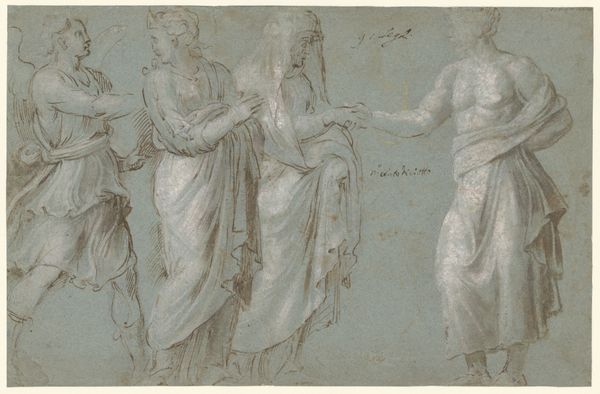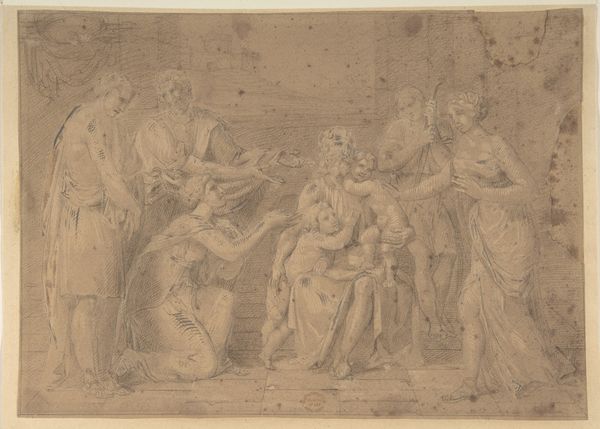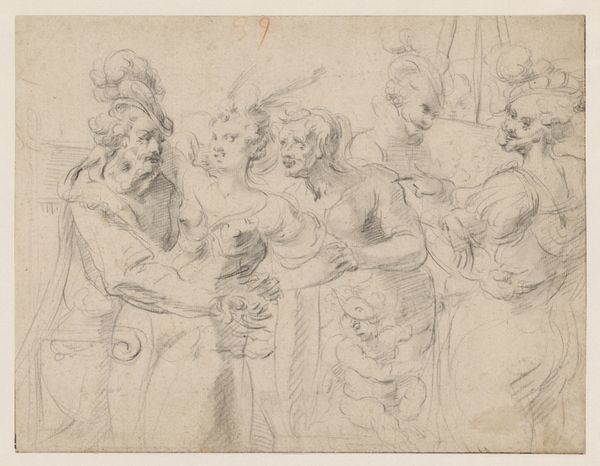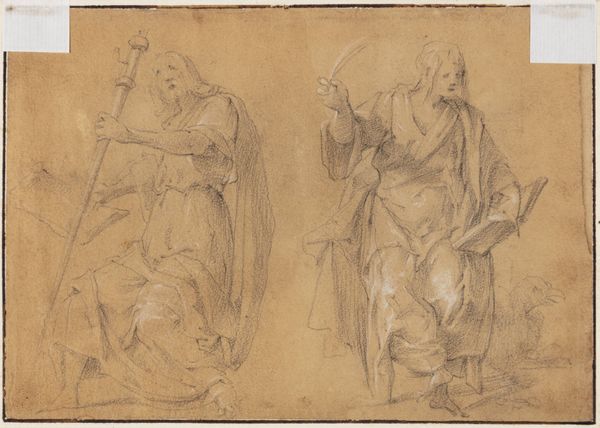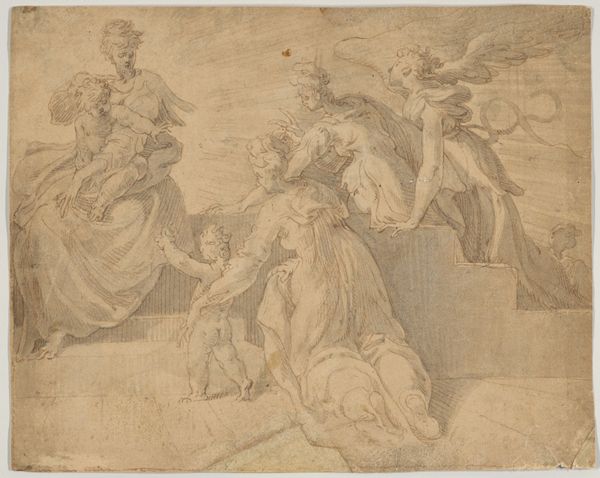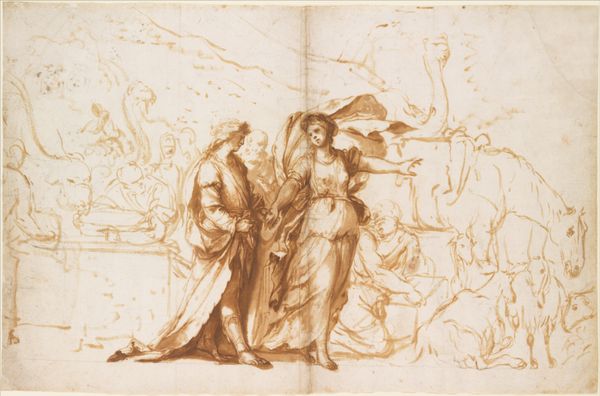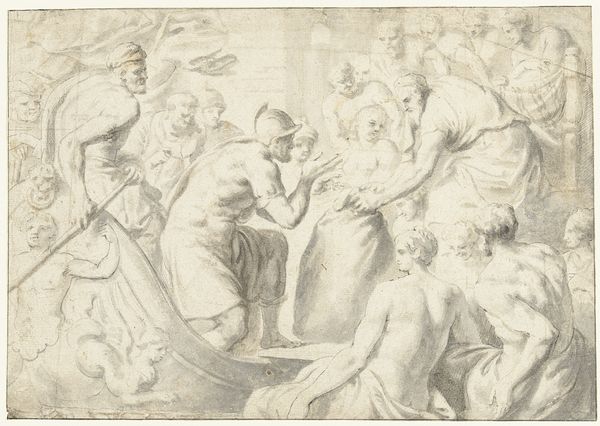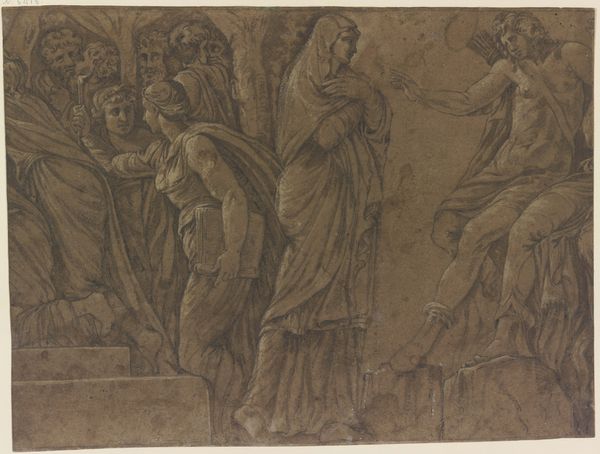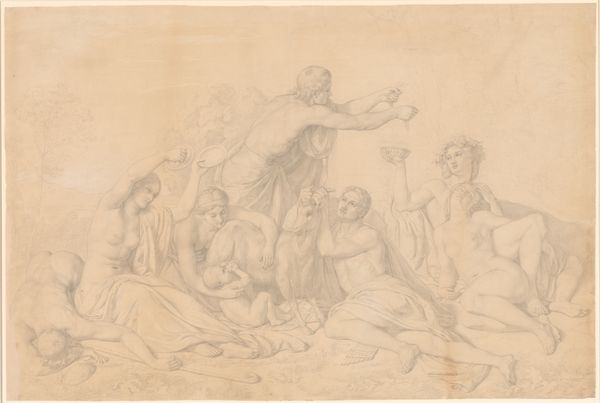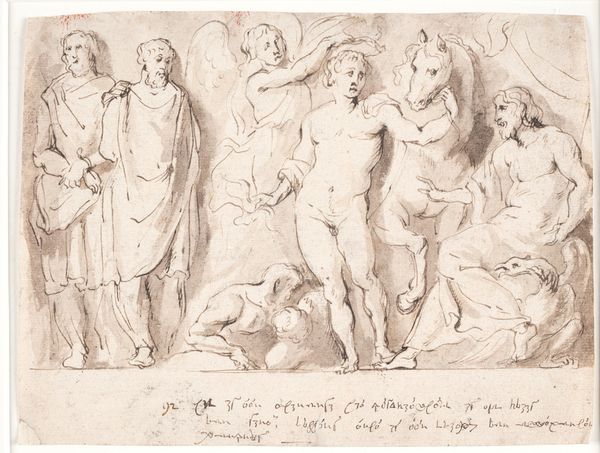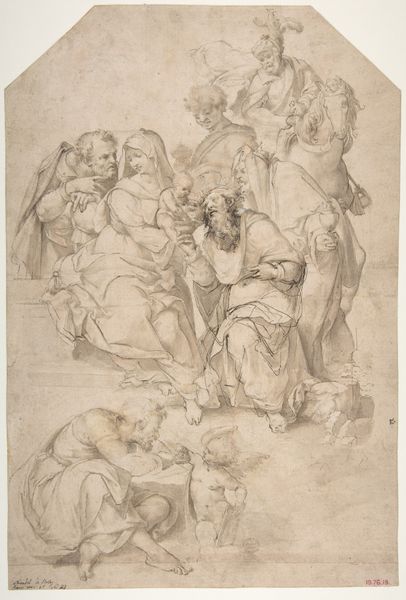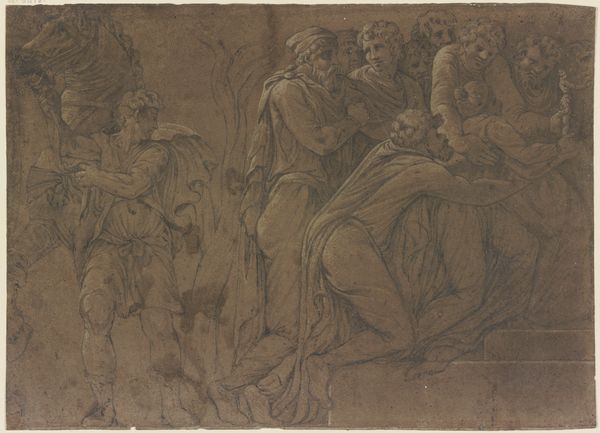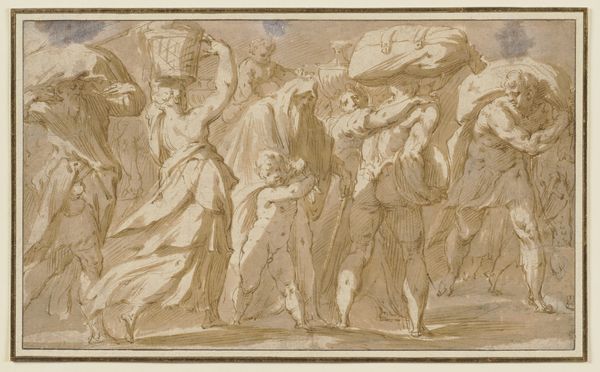
drawing, paper, graphite
#
portrait
#
drawing
#
ink drawing
#
figuration
#
paper
#
11_renaissance
#
graphite
#
history-painting
#
academic-art
Dimensions: 285 × 420 mm
Copyright: Public Domain
Peter Paul Reubens made this drawing, Studies of a Roman Sarcophagus, with pen and brown ink with gray wash over graphite on cream laid paper. Reubens' artistic project was always one engaged with social structures, in particular, with questions of how classical values could inform the present. This drawing captures figures from an ancient Roman sarcophagus, probably made in Italy sometime in the 1600s. Rubens, a Flemish artist, was fascinated by antiquity. He looked to Roman art for models of heroism and civic virtue, values he hoped to revive in his own time. The rediscovery of classical sculpture in the Renaissance had a profound impact on European art. Artists and patrons saw in these ancient forms a sense of order, beauty, and moral purpose that they sought to emulate. Rubens, as a leading artist of the Baroque era, played a key role in transmitting this classical heritage to a new generation. Understanding art like this requires us to be historians, piecing together the social, political, and intellectual context in which it was made. We can consult letters, biographies, and other documents to understand an artist's intentions.
Comments
No comments
Be the first to comment and join the conversation on the ultimate creative platform.
